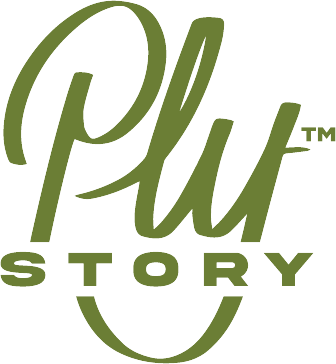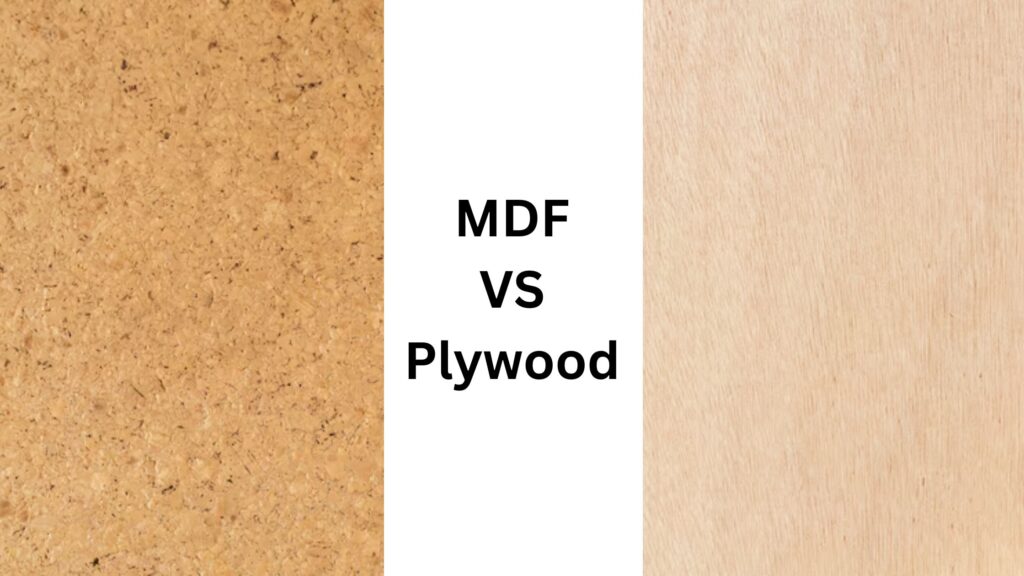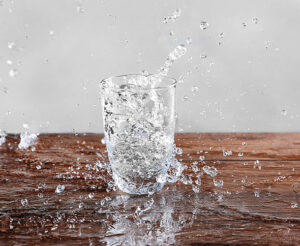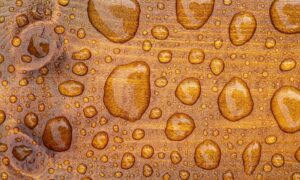Selecting the appropriate material is paramount in DIY projects as it directly influences the outcome’s quality, durability, and overall aesthetics. The right material ensures structural integrity, longevity, and functionality, while also impacting the ease of construction and maintenance.
Whether crafting furniture, constructing shelves, or embarking on home renovation projects, choosing the right material can make the difference between a successful endeavor and a disappointing outcome.
Therefore, understanding the characteristics, strengths, and limitations of materials like MDF and plywood is essential for achieving desired results and ensuring project success.
MDF and plywood are ubiquitous materials readily available at most hardware stores and lumberyards, making them accessible options for DIY enthusiasts and professional craftsmen alike. However, their widespread availability can sometimes lead to confusion regarding which material is best suited for a particular project. It’s essential to recognize that while both MDF and plywood serve as viable alternatives to solid wood, they possess distinct characteristics and are engineered differently.
To make informed decisions and achieve optimal results, it’s imperative to grasp the disparities between MDF and plywood. Understanding factors such as their manufacturing processes, structural attributes, durability, and suitability for various applications enable individuals to select the most appropriate material for their specific project requirements.
By acknowledging the nuances between MDF and plywood, DIYers can embark on their endeavors with confidence, knowing they’ve chosen the material best aligned with their objectives and expectations.
Overview of MDF and Plywood
Medium Density Fiberboard (MDF) and plywood stand as versatile alternatives to solid wood, offering cost-effective solutions without compromising on quality. Engineered through meticulous processes, both materials are composed of wood fibers or veneers bonded together with resins, resulting in durable and stable boards suitable for a wide range of applications.
Differences in Manufacturing Processes for MDF and Plywood:
Despite sharing the commonality of being engineered wood products, MDF and plywood undergo distinct manufacturing processes. MDF is crafted by breaking down hardwood and softwood residuals into wood fibers, which are then combined with wax and resin and pressed at high temperatures to form panels.
In contrast, plywood is fabricated by layering thin sheets of wood veneer at right angles to each other, adhering them with resins, and subjecting them to heat and pressure. This process results in a strong and flexible composite material with unique structural characteristics.
Common Applications for MDF and Plywood:
MDF and plywood find extensive use across various industries and DIY projects due to their versatility and adaptability. Common applications for MDF include cabinet construction, crafting, molding/trim, shelving, and interior paneling, owing to its smooth surface and ease of machining.
On the other hand, plywood is favored for roofing, walls, subfloors, packaging, sports equipment, musical instruments, and high-end loudspeakers, thanks to its strength, durability, and dimensional stability. Understanding the distinct properties and applications of MDF and plywood enables individuals to make informed choices and achieve optimal results in their projects.
Comparison Chart: MDF vs Plywood
| Factors | MDF | Plywood |
| Constituents | Wood fibers are obtained from breaking down hardwood and softwood residuals combined with wax and resin. | Thin sheets of veneer glued together. |
| Structure | Uniform, smooth, and free of knots. | Odd number of layers with grains of adjacent layers at right angles. Face veneers are of a higher grade than core veneers. |
| Safety Hazards | Uses urea-formaldehyde and phenol-formaldehyde resin which can be carcinogenic in very high concentrations. | Uses urea-formaldehyde and phenol-formaldehyde resin which can be carcinogenic in very high concentrations. |
| Uses | Cabinet construction, crafts, molding/trim, shelving, interior paneling. | Roofs, walls, subfloors, boxes, packages, sports equipment, musical equipment, playground equipment, and high-end loudspeakers. |
| Description | – Smooth surface – Easily machined and painted or stained – Available in water and fire-resistant form – Can be machined – Often veneered or painted for improved appearance. | – Very strong board constructed of layers of veneer or plies, glued with grains at 90° to each other – Interior and exterior grades available – Very durable water and boil proof (WBP) plywood suitable for extreme conditions. |
Manufacturing Process:
Medium Density Fiberboard (MDF) is crafted through a meticulous manufacturing process that begins with the breakdown of hardwood and softwood residuals into wood fibers. These fibers are then combined with wax and resin adhesive, forming a homogeneous mixture. The mixture is then subjected to high temperature and pressure, typically in a hydraulic press, to create dense panels of uniform thickness.
Characteristics:
MDF boasts several distinctive features that contribute to its popularity in various applications. One notable characteristic is its smooth surface, which lacks the visible wood grain typically associated with solid wood or plywood.
This smoothness makes MDF an ideal substrate for painting, veneering, or laminating, as it provides a consistent base for finishing. Additionally, MDF’s uniform composition ensures that it is free of knots, voids, or other natural imperfections commonly found in solid wood, enhancing its aesthetic appeal and suitability for decorative purposes.
Strengths and Weaknesses:
While MDF offers numerous advantages, it also presents certain limitations that should be considered when selecting it for specific projects. One of its strengths lies in its durability and stability, as MDF panels exhibit minimal dimensional changes in response to fluctuations in temperature and humidity.
However, MDF is susceptible to moisture absorption, which can lead to swelling, warping, or deterioration over time if not properly sealed or protected. Consequently, MDF is best suited for indoor applications with limited moisture exposure. Additionally, MDF’s relatively low density compared to plywood or solid wood may impact its load-bearing capacity, requiring reinforcement or support for heavier applications such as shelving or cabinetry.
Evaluation of MDF’s Tendency:
Medium Density Fiberboard (MDF) exhibits certain characteristics that influence its strength and durability in comparison to plywood. While MDF offers a smooth and uniform surface, it is susceptible to sagging or splitting under heavy loads or pressure.
The relatively low density of MDF, coupled with its composition of compressed wood fibers, may result in structural deformation or failure when subjected to excessive stress. Therefore, it is essential to reinforce MDF panels adequately, particularly in applications where weight-bearing capacity is a concern, such as shelving or cabinetry.
Discussion of Plywood’s Cross-Graining:
In contrast to MDF, plywood boasts inherent strength and dimensional stability attributed to its unique construction and cross-grain arrangement. By layering thin veneer sheets with their grains oriented perpendicular to one another, plywood achieves exceptional structural integrity and resistance to warping or deformation.
This cross-grain configuration disperses stresses evenly across the panel, minimizing the likelihood of distortion or sagging under load. Furthermore, plywood’s cross-graining enhances its flexibility without compromising strength, allowing it to adapt to various structural contours or dynamic forces encountered in construction or woodworking projects.
Workability
Examination of Cutting, Shaping, and Finishing:
Both MDF and plywood offer distinct advantages and challenges regarding workability, which influence their suitability for different DIY projects. MDF, characterized by its homogeneous composition and smooth surface, is relatively easy to cut, shape, and finish.
Due to its uniform density and lack of grain, MDF can be precisely machined using conventional woodworking tools, such as saws, routers, or drills, without the risk of splintering or chipping. Additionally, MDF accepts various finishes, including paint, veneer, or laminate, seamlessly due to its consistent surface texture.
In contrast, plywood presents unique considerations in terms of workability, primarily influenced by its layered construction and natural wood grain. While plywood is also conducive to cutting and shaping, the presence of visible grain patterns and varying wood densities may impact cutting accuracy and surface finish.
Care must be taken to select the appropriate cutting tools and techniques to minimize tear-out or splintering along the plywood’s edges. Furthermore, finishing plywood requires careful attention to grain direction and surface preparation to achieve desired results, whether staining, painting, or applying protective coatings.
Comparison of Suitability for DIY Projects:
When determining the suitability of MDF versus plywood for DIY projects, several factors come into play, including project complexity, budget considerations, and desired aesthetic outcomes. MDF’s ease of cutting and shaping, coupled with its versatility in accepting finishes, makes it an ideal choice for a wide range of interior projects, such as cabinetry, shelving, or decorative trim. Its uniform composition and smooth surface lend themselves well to intricate designs and detailed craftsmanship, making MDF particularly appealing for projects requiring precision and customization.
On the other hand, plywood’s inherent strength, durability, and natural wood appearance make it well-suited for both structural and decorative applications in DIY projects.
Plywood’s ability to withstand varying environmental conditions, including moisture exposure, makes it suitable for outdoor projects, such as decking, fencing, or garden structures. Additionally, plywood’s flexibility and dimensional stability enable it to accommodate curved or contoured designs, expanding its versatility in furniture-making, boat building, or architectural installations.
Cost Comparison
Assessment of Affordability:
When considering the relative affordability of MDF and plywood, several factors must be taken into account, including the grade, thickness, and type of wood used in each material. Generally, MDF tends to be more budget-friendly than plywood, making it an attractive option for cost-conscious DIY projects.
The lower cost of MDF can be attributed to its manufacturing process, which utilizes wood fibers obtained from hardwood and softwood residuals, combined with resins and pressed into panels.
Plywood, on the other hand, may vary in price depending on factors such as the quality of the veneer, the number of layers, and the specific wood species used. Higher-grade plywood, featuring premium veneers with minimal defects and superior structural integrity, typically commands a higher price compared to lower-grade options used primarily for construction purposes. Additionally, specialty plywood varieties, such as marine-grade or fire-retardant plywood, may come at a premium due to their enhanced performance characteristics and specialized applications.
Example Pricing and Comparison:
To illustrate the cost disparity between MDF and plywood, consider the following example pricing for standard sizes of each material:
- MDF: A standard 4′ x 8′ sheet of 3/4″ MDF may range from $30 to $40, depending on the manufacturer and retailer. Thinner MDF sheets, such as 1/4″ or 1/2″, may be available at even lower price points, typically ranging from $10 to $20 per sheet.
- Plywood: For a comparable 4′ x 8′ sheet of 3/4″ plywood, prices can vary widely based on factors such as the grade, wood species, and veneer quality. Standard plywood grades, such as CDX or ACX, may range from $40 to $60 per sheet, while premium-grade plywood, such as Baltic Birch or hardwood plywood, may cost upwards of $80 to $100 per sheet.
It’s important to note that pricing for both MDF and plywood may fluctuate based on market conditions, regional availability, and retailer pricing policies. Additionally, the cost of accessories, such as adhesives, fasteners, and finishing materials, should also be factored into the overall project budget when comparing material costs.
Uses in Construction
Introduction:
Understanding the diverse applications of medium-density fiberboard (MDF) and plywood in construction is essential for selecting the most suitable material for various projects. Both MDF and plywood offer unique characteristics and benefits that make them indispensable in the construction industry, from interior finishes to structural elements. In this section, we explore the typical uses of MDF and plywood in construction and compare their suitability for indoor and outdoor applications.
Typical Applications:
- Doors: Both MDF and plywood are commonly used for manufacturing interior doors due to their versatility, durability, and ease of customization. MDF doors offer a smooth, paintable surface ideal for achieving a seamless finish, while plywood doors provide structural strength and stability.
- Paneling: MDF and plywood panels are utilized for wall paneling, wainscoting, and decorative accents in residential and commercial spaces. MDF panels, with their uniform surface and lack of visible grain, are favored for modern interior designs, while plywood panels showcase natural wood grain and offer a rustic aesthetic.
- Flooring: Plywood serves as a popular subflooring material in construction, providing a stable base for various floor coverings such as hardwood, laminate, and tile. Additionally, plywood underlayment is often used to level and reinforce floors before installation.
- Framing: Plywood is integral to structural framing applications, including wall framing, roof decking, and subfloor construction. Its cross-grain composition and dimensional stability enhance structural integrity, making it a preferred choice for load-bearing components.
Indoor vs. Outdoor Suitability:
- Indoor Applications: Both MDF and plywood are well-suited for indoor use, offering versatility, affordability, and ease of installation. MDF excels in applications where a smooth, paintable surface is desired, such as interior cabinetry, shelving, and furniture. Plywood is preferred for structural elements like wall framing and subflooring, where strength and durability are paramount.
- Outdoor Applications: While plywood can be used for outdoor projects with proper treatment and sealing, MDF is not recommended for exterior applications due to its susceptibility to moisture damage. Plywood, especially marine-grade or pressure-treated varieties, is commonly employed in outdoor construction projects such as exterior cladding, decking, and fencing, where exposure to the elements requires enhanced weather resistance.
Disadvantages and Risks
Introduction:
While medium-density fiberboard (MDF) and plywood offer numerous advantages in construction and woodworking, it’s essential to recognize their potential drawbacks and associated health risks. In this section, we delve into the disadvantages and risks posed by MDF and plywood, highlighting strategies to mitigate these concerns and ensure safe handling and usage.
Potential Drawbacks and Health Risks:
- Dust Production: Both MDF and plywood generate significant amounts of dust when cut, sanded, or machined, posing respiratory hazards to workers and occupants. Inhalation of wood dust particles can lead to respiratory issues, allergic reactions, and long-term health problems.
- Weight: Plywood tends to be heavier than MDF due to its layered construction, making it cumbersome to handle and transport, especially in large sheets or panels. Excessive weight can increase the risk of accidents, strain injuries, and structural instability during installation.
- Emissions of Volatile Organic Compounds (VOCs): MDF and plywood may emit volatile organic compounds, including formaldehyde, from adhesives and resins used in their manufacturing process. Prolonged exposure to VOCs can result in adverse health effects, such as respiratory irritation, headaches, and exacerbation of existing conditions like asthma.
Mitigation Strategies and Solutions:
- Dust Control Measures: Implement comprehensive dust control measures, including the use of dust extraction systems, HEPA-filtered vacuum cleaners, and personal protective equipment (PPE) such as respirators and goggles. Minimize dust exposure by working in well-ventilated areas and employing wet cutting or sanding techniques to suppress airborne particles.
- Handling and Lifting Techniques: Train workers in proper lifting techniques to minimize the risk of strain injuries associated with handling heavy plywood sheets. Utilize mechanical aids such as hoists, dollies, and forklifts to safely maneuver and transport large and heavy panels.
- Ventilation and Air Quality Management: Ensure adequate ventilation in work areas to disperse airborne contaminants and reduce VOC concentrations. Consider installing air purification systems or air scrubbers equipped with activated carbon filters to mitigate indoor air pollution and improve overall air quality.
- Selection of Low-Emission Products: Choose MDF and plywood products labeled as low-emission or CARB (California Air Resources Board) compliant to minimize VOC emissions and promote healthier indoor environments. Opt for formaldehyde-free adhesives and finishes whenever possible to reduce exposure to harmful chemicals.
- Sealing and Encapsulation: Seal exposed edges and surfaces of MDF and plywood with appropriate sealants or coatings to minimize off-gassing of VOCs and enhance moisture resistance. Encapsulate materials in impermeable barriers or laminates to prevent direct contact with occupants and reduce emissions.
By proactively addressing the potential drawbacks and health risks associated with MDF and plywood, construction professionals and DIY enthusiasts can create safer work environments and mitigate adverse health effects.
Through the implementation of effective dust control measures, proper handling techniques, and careful selection of low-emission products, the inherent disadvantages of MDF and plywood can be minimized, ensuring optimal performance and safety in construction and woodworking projects.
Summary of Key Differences:
- Construction: MDF is made from wood fibers bonded with resins, resulting in a uniform and smooth surface, while plywood consists of thin layers of wood veneer glued together with grains at right angles to each other, providing strength and dimensional stability.
- Strength and Durability: Plywood is generally stronger and more durable than MDF, with superior dimensional stability and resistance to sagging, splitting, and warping. However, MDF is suitable for lighter-duty applications and may require reinforcement for heavy loads.
- Workability: MDF is easier to cut, shape, and finish due to its uniform composition and lack of visible grain, making it ideal for intricate designs and painting. Plywood, while more challenging to work with, offers greater flexibility and can be bent to create curved surfaces.
- Moisture Resistance: Plywood exhibits better moisture resistance than MDF, making it suitable for outdoor and high-moisture environments. MDF tends to swell and degrade when exposed to water, necessitating proper sealing and finishing for moisture protection.
- Cost: MDF is generally more economical than plywood, offering a budget-friendly option for DIY projects. Plywood prices vary depending on grade, thickness, and wood type, with higher grades commanding higher costs.
Recommendations:
- Indoor Applications: For indoor furniture, cabinetry, shelving, and decorative accents where moisture exposure is minimal, MDF can be a cost-effective and versatile choice. Its smooth surface and ease of finishing make it ideal for painting and intricate designs.
- Outdoor and High-Moisture Environments: In outdoor construction, flooring, roofing, and areas prone to moisture, plywood’s superior strength and moisture resistance make it the preferred option. Select exterior-grade plywood or marine plywood for optimal durability and performance.
- Heavy-Duty and Structural Projects: When durability and load-bearing capacity are paramount, such as in framing, subflooring, and structural applications, plywood’s strength and dimensional stability make it the preferred choice.
- Budget Considerations: Consider your project requirements and budget constraints when choosing between MDF and plywood. While MDF offers affordability and ease of use, plywood provides enhanced durability and versatility for a wide range of applications.
Health and Safety: Prioritize the selection of low-emission and formaldehyde-free products to minimize indoor air pollution and promote healthier living environments. Implement proper dust control measures and ventilation to mitigate health risks associated with woodworking and construction activities.



